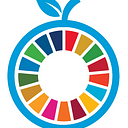Pathways to sustainable land-use and food systems
By Jordan Poncet, FABLE Manager, Aline Mosnier, FABLE Scientific Director, and Guido-Schmidt-Traub, FABLE Project Director, on behalf of the FABLE Consortium
Ahead of the 2021 UN Food Systems Summit, the Food, Agriculture, Biodiversity, Land-Use, and Energy (FABLE) Consortium, a global network of country research teams operating as part of the Food and Land Use Coalition (FOLU), has published Pathways to Sustainable Land-Use and Food Systems. This second global report of the FABLE Consortium presents pathways towards sustainable land-use and food systems for 20 countries (Argentina, Australia, Brazil, Canada, China, Colombia, Ethiopia, Finland, Germany, India, Indonesia, Malaysia, Mexico, Norway, the Russian Federation, Rwanda, South Africa, Sweden, the United Kingdom, and the United States). Its findings suggest that integrated strategies across food production, biodiversity, climate, and diets can meet the objectives of the Paris Agreement and the Sustainable Development Goals (SDGs). Meeting these objectives will require profound and rapid changes to each country’s food and land-use system.
The national pathways presented in the report were developed by each FABLE country team in four steps. First, country teams adopted global targets covering the entire land-use system that are consistent with the SDGs and the Paris Agreement. Second, the teams developed national pathways using locally appropriate modeling tools. To this end, the FABLE Consortium has developed a simplified, open-access FABLE Calculator to complement more complex models. Third, in an iterative process country teams adjusted their assumptions and pathways to ensure balanced trade flows and to aim towards achieving the global FABLE targets. Throughout the process, the country teams engaged stakeholders to review assumptions, seek technical advice, and build a shared vision of how to transform land-use and food systems.
This approach is a method for problem solving to tackle the complex issues involved in making land-use and food systems sustainable and in sharing lessons across countries. By working backwards from mid-century targets, pathways can shed light on the major transformations that are needed to achieve shared goals. Crucially, they provide a framework for engaging stakeholders, can help identify mid-term technology benchmarks, and provide a long-term perspective to help countries avoid locking themselves into unsustainable food and land-use systems. They also provide a tool for countries to integrate biodiversity conservation and restoration as well as food systems into their climate strategies, particularly in the run-up to the climate and biodiversity COPs in 2021.
The report’s findings point to the importance of country-driven analysis to address the specific challenges each country faces. However, despite each country’s unique circumstances, the findings suggest that countries have at least four critical levers for making land-use and food systems sustainable:
(1) Dietary shifts — often towards less meat consumption and less overconsumption of food;
(2) sustainable and productive agriculture;
(3) improved land-use design, particularly for protecting and restoring nature;
(4) rapid reductions in food loss and waste.
These levers point to some of the options countries have for making their food and land-use systems more sustainable.
The views and opinions expressed in this blog are those of the author and do not necessarily reflect the official policy or position of the United Nations Food Systems Summit.
